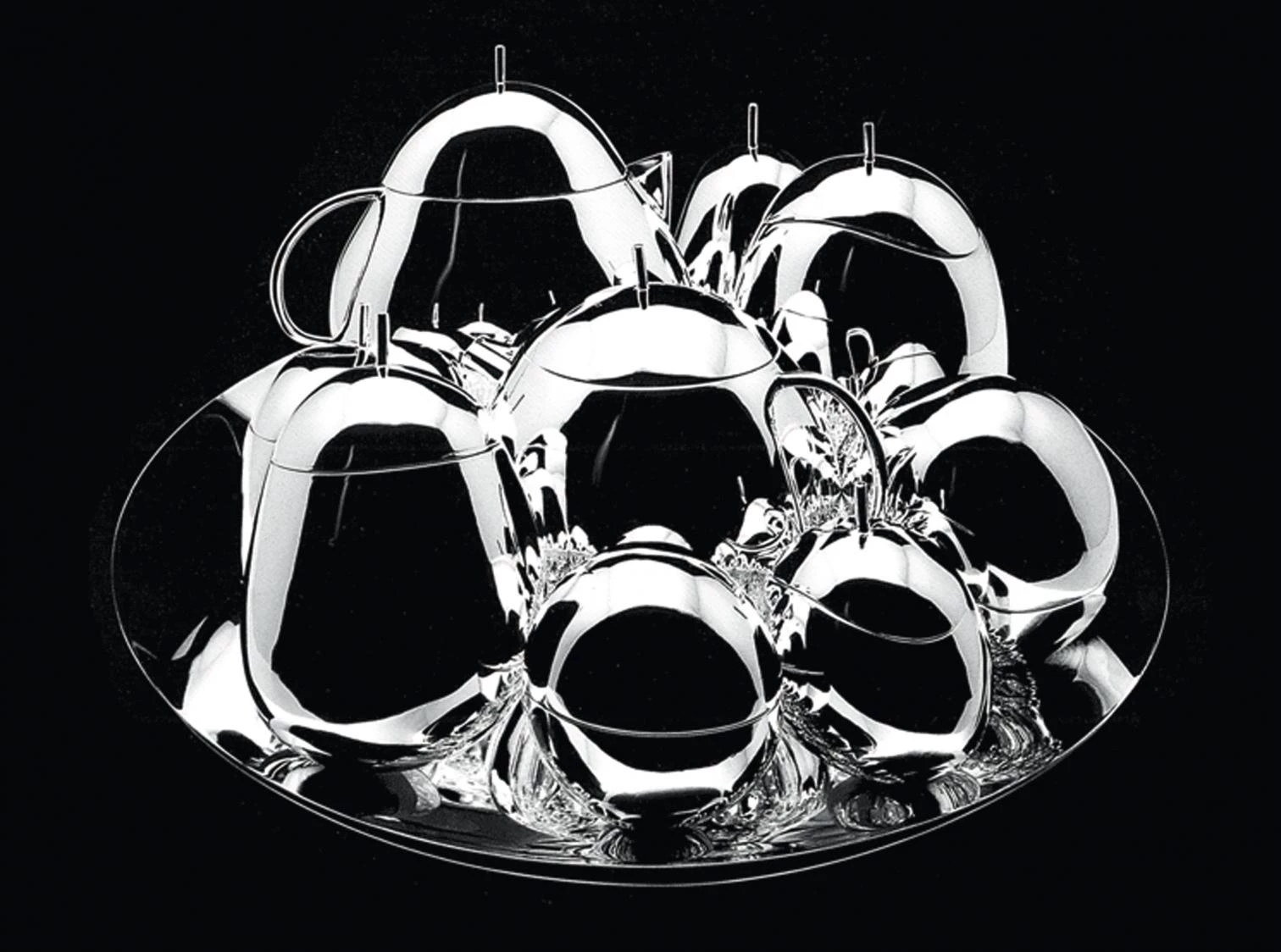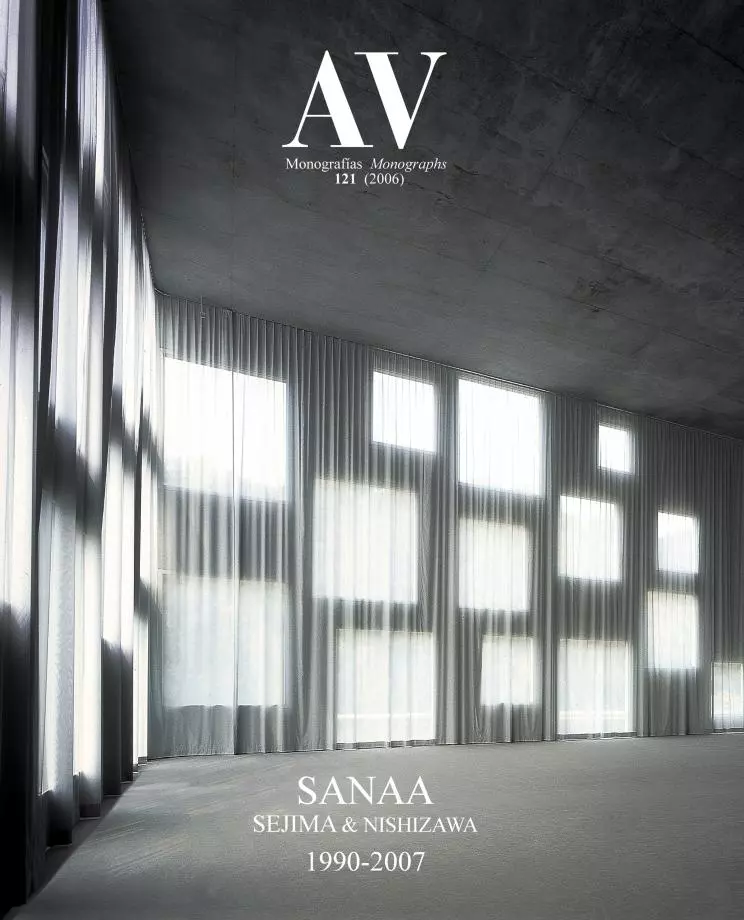
SANAA is summed up in a fruit bowl for tea. In the exhibition on Kazuyo Sejima and Ryue Nishizawa held at the MUSAC of León, the exquisite oeuvre of the architects is abridged in a tea set designed as a fruit bowl, with the different elements – tea pot, sugar bowl, milk jug and cookie jars – treated ascareened and rounded pieces, in a tray that bringsthem close together to form a silvery still life, crowning every lid with small stems that enhancethe appearance of steel fruits. A video shown in a different hall –the organizers of the exhibition decided to separate the models and objects from the bidimensional plans and documents– describes the manufacturing process of the prototypes, with geometric blocks of wax which gradually acquire the round form of the future mold with knife cutsmade by hands that expertly move following the gesture of peeling fruit. The intermediate stages of the process are faceted forms that emerge from the wax shavings like the apples of Cézanne’s paintings, modelled by his characteristic parallel brushstrokes, but the final result is a set of objects that display theautistic texture of Giorgio Morandi’s hermetic pots, thick sensual pears to which the beret stem gives the smiling mood of a cartoon, and which shine as exact pieces of fine jewelry in their final stainless steel version.
This metallic and vegetal set ties up many of the threads that string the light and consistent career of the Japanese office: the tactile sensibility of the works, in which matter fades away through a sfumato that blurs the outlines in shadows and reflections; the empathy with surrounding nature, perceived initially through the filter of ceremony, and then broken down into a vibrant tapestry of petals and peels; the introverted laconicism of the buildings, self-referent objects that blend with their context and at the same time assert their presence with the confidence of still lives; the orchestrated fragmentation of the programs, which explode first and are enclosed later in rigorous geometric precincts, with the pieces set up in a choreography that combines lively chance and necessary frame; and the fanciful taste for play, which interprets daily spaces with the unexpected combination of a child’s eye and an adult’s refinement. All these features aregathered in this tea fruit bowl, a lexical oximoron asexotic as the bread tree, and which brings together tatamis and plum trees, domestic protocols and ritual gardens, the aroma of fruit and the vapor of the infusion, whose steamy dawn transforms space into an amniotic atmosphere of perfume and cloud, with a fragrant offering of unseizable temptations, faded in the vague haze of the contours of dreams.






